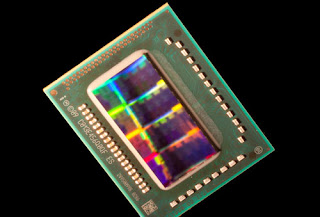About this time last year, Intel offered us a complete processor revamp and architecture update for both the desktop and mobile markets. Intel called it their evolutionary "tick" step in their manufacturing process migration from 45 to 32nm. The "tock," as it were, follows along in cadence offering refinement and feature enhancement that completes the product evolution. So here we are, about 12 months or so later, and the "tock" cometh. Intel's tock architecture, known as Sandy Bridge, is still based on 32nm manufacturing process technology but offers critical features and performance enhancement, as well as higher levels of architectural integration. Intel is set launch a refresh of both desktop and mobile architectures and on the following pages here, we're aiming to give you a detailed view of what Sandy Bridge is going to bring for 2011 in the notebook arena. If you haven't been by our desktop line-up coverage, do yourself a favor and bone-up on the details we offer there as well, for what you're about to see here is all about how Intel intends to enhance your mobile computing experience.
Intel's Core i7-2820QM processor is the vehicle that we'll be using as a means of evaluating Intel's new architecture. It's not the highest-end SKU in the line-up but it has all the bells and whistles enabled and about 90% of top-end clock speed that Intel will offer in their "Extreme" version mobile chip. In a 45 Watt power envelope, this is the Sandy Bridge chip you'll likely see in some of the more capable multimedia targeted notebooks coming to market in 2011. And we'd dare say, at this early juncture, it packs a healthy serving of beef-cake computing muscle for just about anything you could throw at it. But enough of the genuflecting, let's get a look at the specifics and then put Sandy Bridge mobile to the test.
Cranking up the speeds and feeds, on the fly:
You'll have to excuse our cut-and-paste ways with the above eye-charts but in the interest of brevity we felt they laid things out nicely. As you'll note, there are dual-core and quad-core variants of Sandy Bridge mobile processors, all of which have Intel's new Turbo Boost 2.0 dynamic overclocking at a single core granularity if required. The Core i7-2820QM chip that we're testing today has a base clock of 2.3GHz with Turbo Boost speeds of 3.1GHz, 3.2GHz and 3.3GHz for quad-core, dual-core and single-core modes respectively. Also note that integrated graphics cores, which are now resident on-die versus the previous gen Arrandale discrete die, multi-chip module design, also have dynamic clock gating that scales from 650MHz to 1.3GHz. Finally, these new chips support Intel HyperThreading technology for up to 8 threads of processing resources in quad-core designs and 4-thread throughput in dual-core chips.
New engines under the hood:All chips also support Intel's new AVX extension for increased SSE-based floating point performance as well as Intel AES (Advanced Encryption Standard) instructions for hardware-based encryption processing. Another very significant feature add is Intel's new Quick Sync hardware video encode engine that offloads video file conversion in hardware (we'll cover more on this in detail shortly). Finally, as is detailed in the bottom chart, Intel plans to release an entire family of low voltage and ultra low-voltage versions of Sandy Bridge that will drop into as little as a 17 Watt TDP power envelope. These chips will provide serious direct competition for AMD's low power Zacate Fusion processor, at least with respect to AMD's 18 Watt variant of the chip.
source: hothardware.com

